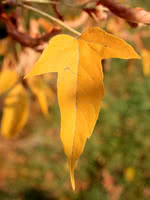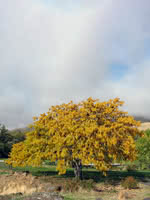Mon-Fri 9am - 5pm Mountain time
Manitoba Maple vs Thornless Honeylocust
Acer negundo
Gleditsia triacanthos inermis
Manitoba Maple is a fast growing tree with great fall color. These trees are typically grown as feature or shade trees on larger properties and acreages. Manitoba maples are cold hardy and tolerant of a wide range of soil moisture conditions.
Note that Manitoba Maple is considered toxic to horses.
Thornless Honey Locust makes an excellent shade tree with its lacy foliage and dappled shade. The leaves are honey-yellow, light and airy, providing interesting color and texture to your landscape. This variety is thornless, and the seeds and pods provide food for wildlife such as deer and squirrels.
The Thornless Honey Locust is tolerant of drought, various soil conditions, and even road salt.
Manitoba Maple Quick Facts
Thornless Honeylocust Quick Facts
In row spacing: 2.4 - 3 m (8 - 10 ft)

